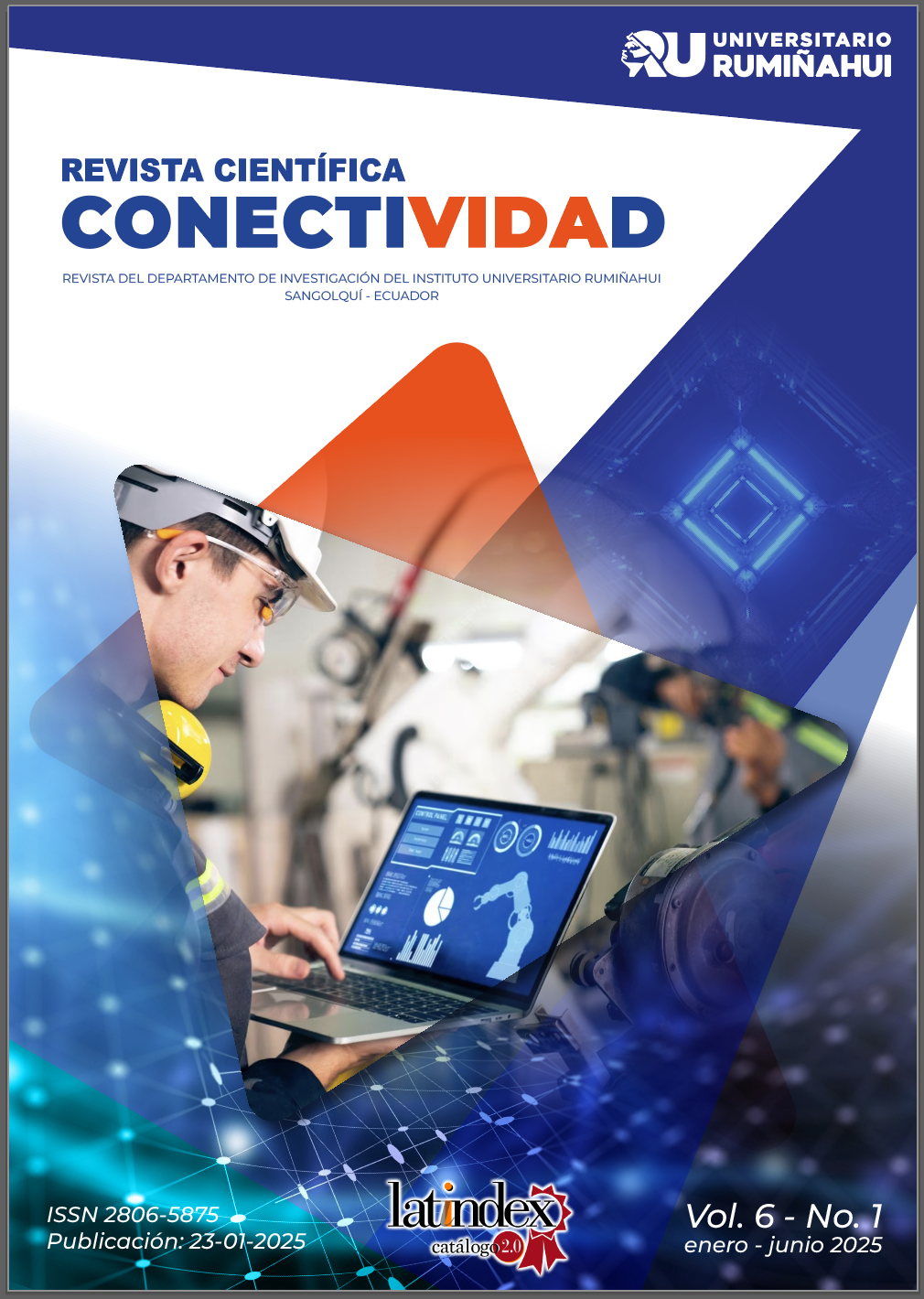Analysis of GALILEO Satellite Positioning Error in Local Geodetic Networks: Case Study: Rumiñahui, Ecuador
DOI:
https://doi.org/10.37431/conectividad.v6i1.236Keywords:
GPS, Topography, Photogrammetry, EngineeringAbstract
The present study focused on the analysis of the error of GALILEO satellite positioning in local geodetic networks, with a specific focus on the Rumiñahui canton, Ecuador. The main objective was to compare the coordinates determined with the European satellite system with those obtained through a GPS geodetic network. To carry out this research, five points of the geodetic network were tracked using multi-constellation and multi-frequency GNSS equipment, carrying out independent sessions of up to 8 hours. In addition, it was linked to the GNSS Continuous Monitoring Network of Ecuador – REGME through 2 EMCs. The collected data were processed in commercial software and the mean square error between GPS and GALILEO coordinates was subsequently calculated. The results indicated that the RMSE between the two networks was 4.3 centimeters, this value suggests that the Galileo system offers adequate precision for engineering applications such as cadastre, topography or photogrammetry. From the study it is concluded that the implementation of geodetic networks using the Galileo system is viable for projects that have the aforementioned requirements. It is recommended to replicate this methodology in different locations throughout the country, in order to validate the precision of the European system in all regions of Ecuador, and ensure its applicability in various geographic contexts.
References
Del Cogliano, D. H. (2021). Geodesia física. In Escuela Regional" Nuevas técnicas geodésicas para América Latina y el Caribe"(5 al 12 de abril de 2021, modalidad virtual).
Enríquez, D. y Morillo, A. (2018) Análisis de la posición del sistema Galileo en el Ecuador Continental utilizando el software RTKLIB. Revista Geoespacial, 15 (2), 80-94. https://doi.org/10.24133/geoespacial.v15i2.1243 DOI: https://doi.org/10.24133/geoespacial.v15i2.1243
Enríquez, D. y Cárdenas, S. (2019). Validación del método de nivelación GPS en el Ecuador. Sangolquí: Universidad de las Fuerzas Armadas - ESPE.
Guimaraes, G. D. N., Blitzkow, D., De Matos, A. C. O. C., Machado, W. C., Albarici, F. L., Junior, C. A. C. E. C., ... & Silva, V. C. (2022) Establecimiento de IHRF e integración ITGRF en Brasil: Situación y perspectivas. Simposio Brasileño de Geomática.
Kehm, A., Sánchez, L., Bloßfeld, M., Seitz, M., Drewes, H., Angermann, D., & Seitz, F. (2022). Combination strategy for the geocentric realization of regional epoch reference frames. Journal of Geophysical Research: Solid Earth, 127(10), e2021JB023880. DOI: https://doi.org/10.1029/2021JB023880
Merizalde, M. (2020). Determinación de las principales alturas del Ecuador mediante Nivelación GPS. Sangolquí: Universidad de las Fuerzas Armadas - ESPE.
Pozo, S. (2023). Análisis de PPP en las estaciones de la REGME. Caso de estudio: Ecuador. Sangolquí: Universidad de las Fuerzas Armadas - ESPE
Ramírez Núñez, M., & Valverde Calderón, J. F. (2023). Desarrollo de una herramienta informática para el ajuste de redes geodésicas en la carrera de Ingeniería en Topografía y Geodesia de la Universidad Nacional, Costa Rica. Revista Geográfica de América Central, (70), 135152. https://doi.org/10.15359/rgac.70-1.5 DOI: https://doi.org/10.15359/rgac.70-1.5
Rojas, V. (2024). Implementación de tecnología de transmisión de datos GNSS en tiempo real mediante NTRIP. Revista Técnica de la Construcción, 1(21), 28-33.
Zamora, J. M., Gutiérrez, S. B., & Calderón, Á. Á. (2021). Parámetros de transformación entre los marcos geodésicos CR05 y CR-SIRGAS contemplando diferentes soluciones
ITRF. Ingeniería. Revista de la Universidad de Costa Rica, 31(1), 21-50.
Published
How to Cite
Issue
Section
License
Copyright (c) 2025 Instituto Superior Tecnológico Universitario Rumiñahui

This work is licensed under a Creative Commons Attribution-NonCommercial 4.0 International License.
The originals published in the electronic edition under the first publication rights of the journal belong to the Instituto Superior Tecnológico Universitario Rumiñahui; therefore, it is necessary to cite the source in any partial or total reproduction. All the contents of the electronic journal are distributed under a Creative Commons Attribution-Noncommercial 4.0 International (CC-BY-NC 4.0) license.







2.png)





